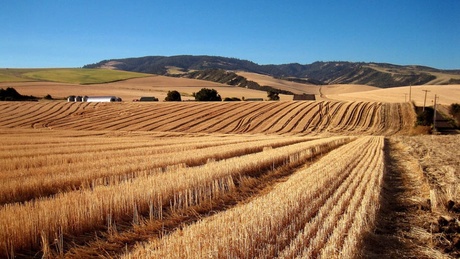forum
library
tutorial
contact

Creating Power from Wheat Straw
by StaffNorthwest Public Radio, June 13, 2012
|
the film forum library tutorial contact |

|
Creating Power from Wheat Strawby StaffNorthwest Public Radio, June 13, 2012 |
RICHLAND, Wash. - Since 1978, one eastern Washington county has out-produced all other wheat-growing counties in the U.S. But what to do with all the leftover straw?
Wheat straw is the extra stuff that's left over after harvest. And it's not very useful. Farmers usually till it into the soil or burn it - something clean air advocates aren't too happy about.
In eastern Washington's Whitman County, farmers grow an average of 650 million pounds of wheat straw each year. And nobody wants it.
That got Washington State University professor Jacob Leachman thinking about what could be done with wheat straw scraps. He checked in with some Palouse farmers. Each conversation, Leachman said, went like this:
"What's your wasted sources of biomass on the farm? I mean, what really can't you do anything with? And he said, 'Wheat straw. Undoubtedly.'"
So a group of five Washington State University students decided to turn this resource into power.
 They came up with an intricate process that breaks the wheat straw down into basic elements. And with these elements, they say they could:
They came up with an intricate process that breaks the wheat straw down into basic elements. And with these elements, they say they could:
"If you could save money with doing something in a more renewable way, then why not do it? This is a very renewable energy source. It's just straw," says Bair, who grew up on a farm in central Washington.
He's seen first-hand how difficult it is for farmers to get rid of the stuff. Bair says wheat straw creates a tiny amount of fertilizer.
"It's a really hard thing to disk back into the soil," Bair says. "You have to run over the field a lot of times to get it back into a good enough shape to plant in."
Near the end of the project, Bair discovered the students' system was producing much more hydrogen than they needed. So, the students devised a plan to turn some of that hydrogen back into fertilizer.
The students took second place in the Hydrogen Student Design Contest, an international competition. Leachman says faculty members will now try to implement their design. He has high hopes for wheat straw's efficiency.
And Leachman says farmers are interested in the prospects, too.
learn more on topics covered in the film
see the video
read the script
learn the songs
discussion forum
